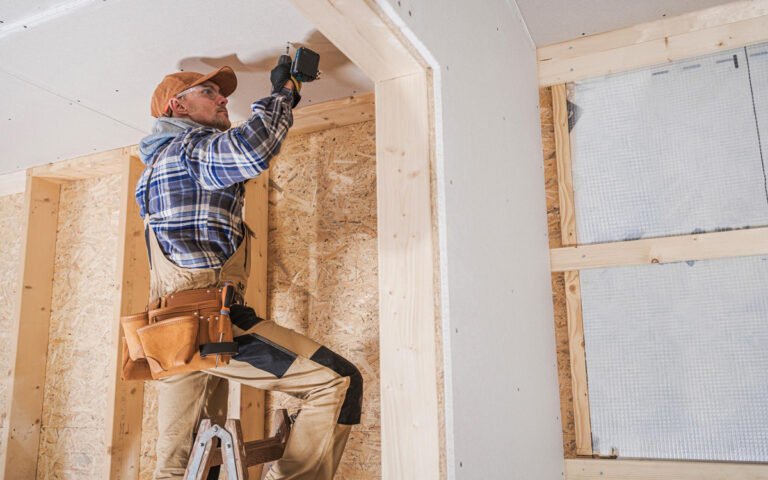Roofing Systems Are More Complex Than They Look
Modern roofing systems do far more than provide a protective barrier over your home. They are intricate assemblies designed to manage air circulation, prevent moisture buildup, and allow natural light inside—all while standing up to severe weather conditions.
While shingles and gutters often get the spotlight, less-visible elements like ventilation units and skylights play crucial roles in roof performance. Properly maintained, they help regulate temperature, prevent water damage, and improve the overall efficiency of the home.
For homeowners looking to extend the life of their roof while enhancing comfort indoors, ventilation and skylight maintenance should be a top priority.
How Ventilation Keeps Roofs Dry and Efficient
In most homes, heat and moisture naturally rise into the attic or upper crawlspaces. If this warm, humid air becomes trapped, it can cause a host of problems—from mildew and mold growth to warped decking and premature shingle deterioration.
A roof air ventilator is a specialized device designed to expel hot air from the attic while allowing cooler air to enter through soffit or intake vents. This continuous airflow helps maintain stable attic temperatures and reduces humidity, especially during hot summers or when heating systems run during winter months.
By removing trapped heat, these ventilators reduce strain on HVAC systems, prevent ice dam formation in cold climates, and extend the lifespan of roofing materials. Whether passive or powered, their performance depends on proper installation and roof layout. Homes with complex or steeply pitched roofs may require multiple ventilators to maintain balanced airflow.
Skylight Maintenance: When Repairs Become Necessary
Protecting the Interior from Costly Damage
Skylights are prized for the natural light they bring into interior spaces, but over time, they can become sources of energy loss or even water infiltration. Common issues include cracked glass, fogged glazing, damaged flashing, or sealant failure. When these problems go unresolved, they can lead to interior staining, drafts, and even structural deterioration of surrounding materials.
This is where skylight repairs come in. Depending on the condition of the unit, repair might involve resealing the perimeter, replacing flashing, or tightening hardware. In more serious cases, partial disassembly or glass replacement may be needed.
Routine inspection and timely repair of skylights can help avoid costly damage and preserve indoor comfort. For older skylights or those with repeated issues, it may be more cost-effective to consider full replacement using modern, energy-efficient designs.
Why Ventilation and Skylights Should Work Together
Though they serve different purposes, ventilators and skylights must function in harmony to maintain roof performance. For instance, excessive condensation around a skylight could signal poor attic ventilation. In turn, an improperly sealed skylight may allow moisture to enter, compromising insulation and airflow within the attic.
When either component fails, it can disrupt the entire roofing ecosystem. Coordinated inspections of both systems—especially in aging roofs—help identify problem areas and inform decisions about repairs, replacements, or upgrades.
Homes that invest in both ventilation improvements and skylight maintenance often experience better air quality, more consistent temperatures, and lower utility bills year-round.
Signs That Indicate It’s Time for an Upgrade
Roofing issues can develop slowly over time, so it’s important to stay alert to early warning signs. Here are some indicators that you may need to address ventilation or skylight problems:
-
Rooms that are unusually hot or cold, regardless of thermostat settings
-
Condensation on skylight glass or interior staining near the frame
-
Attic air that feels warm and damp, especially in winter
-
Visible mold or mildew in upper corners of rooms or attic beams
-
Noise from the roof during windy weather (loose vent or skylight hardware)
-
Water dripping during storms from ceiling areas under the skylight
If you observe any of these, it’s best to call a professional roofer for an inspection. Addressing issues early can prevent damage from spreading and avoid more expensive interventions later.
Professional Assessment and Installation Is Key
While DIY solutions are tempting, roof ventilation systems and skylights should always be assessed and repaired by licensed roofing professionals. Improper installation or patchwork fixes often cause more harm than good, leading to leaks, mold, or energy inefficiencies.
Experts can evaluate airflow patterns, attic insulation, and current vent placement to determine if your roof meets modern ventilation standards. They can also recommend whether a damaged skylight is suitable for repair or requires full replacement.
Hiring certified professionals also ensures compliance with local building codes and manufacturer warranty requirements, which can protect your investment in the long run.
Long-Term Benefits of Roof Ventilation and Skylight Care
When maintained properly, both ventilation systems and skylights offer long-term advantages that extend beyond structural integrity. These include:
-
Reduced energy costs through better temperature regulation
-
Increased comfort in living spaces beneath the roof
-
Lower risk of mold, mildew, and water damage
-
Extended life span of roofing materials and insulation
-
Improved resale value and marketability of the home
By addressing these elements proactively, homeowners create a more efficient, safer, and healthier indoor environment for their families.
Seasonal Maintenance and Preventive Steps
Even the best-installed systems need routine attention. Here’s how to keep things running smoothly:
-
Clean debris away from vent openings and skylight frames twice a year
-
Inspect caulking and seals around skylights for cracks or gaps
-
Ensure attic insulation does not block airflow around ventilators
-
Look for signs of condensation or staining during colder months
-
Schedule annual professional inspections for aging systems
Small, consistent efforts can prevent costly repairs and help you get the most from your existing setup.
Conclusion
Effective roofing goes beyond surface materials—it involves smart ventilation and well-maintained skylights. A roof air ventilator ensures your attic stays cool and dry, while regular skylight repairs keep your home bright and leak-free. Together, these elements enhance comfort, energy efficiency, and the overall resilience of your roofing system.
Investing in these upgrades today means fewer problems tomorrow—and a roof that works just as hard as you do.



